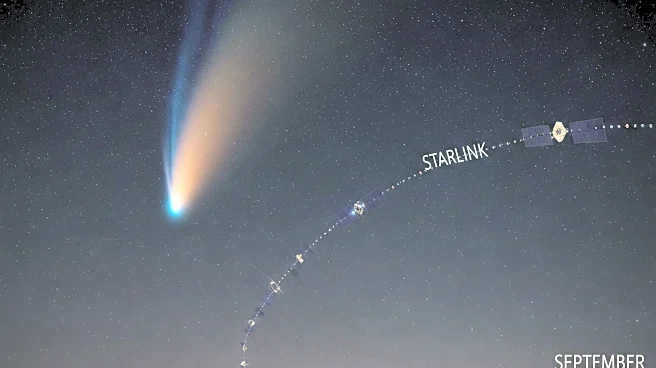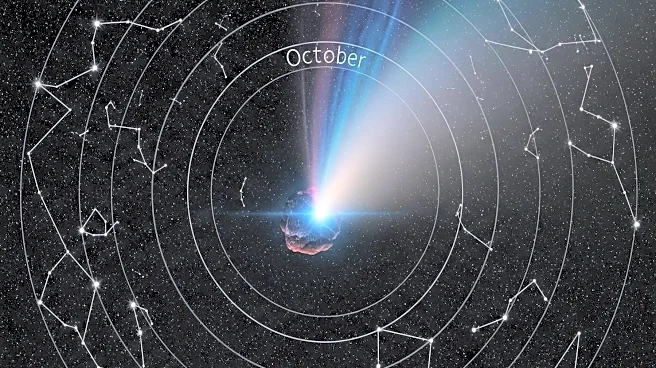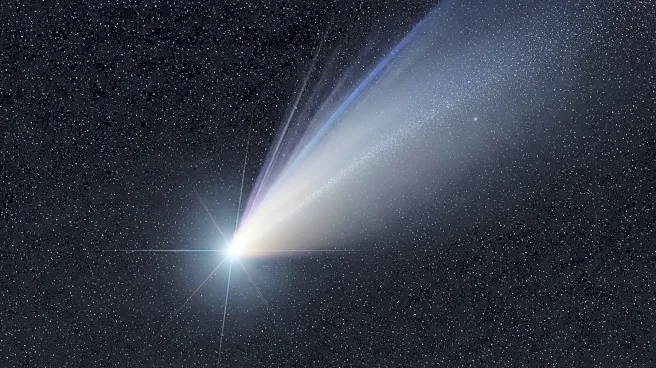What's Happening?
Astronomers are closely monitoring three comets: C/2025 K1 (ATLAS), C/2025 R2 (SWAN), and C/2025 A6 (Lemmon). While two of these comets may not be visible without telescopes, Comet Lemmon shows promise of brightening enough to be seen with the naked eye under dark skies. Discovered in January by telescopes atop Mount Lemmon in Arizona, Comet Lemmon has been steadily brightening, aligning closely with predicted patterns. This has raised expectations that it might be visible in late October, potentially lighting up the Halloween night sky.
Why It's Important?
The observation of these comets is significant for both amateur and professional astronomers, as it provides an opportunity to study celestial phenomena and the behavior of comets. Comet Lemmon's potential visibility could offer a rare spectacle for skywatchers, enhancing public interest in astronomy. The study of comets also contributes to our understanding of the solar system's dynamics and the composition of celestial bodies, which can have implications for future space exploration and research.
What's Next?
Astronomers will continue to track the brightness and trajectory of Comet Lemmon as it approaches its perihelion on November 8. If the comet continues to follow its predicted brightening pattern, it may become visible to the unaided eye, providing a unique viewing opportunity for observers. The ongoing observation of these comets will help refine predictions and enhance understanding of cometary behavior.










